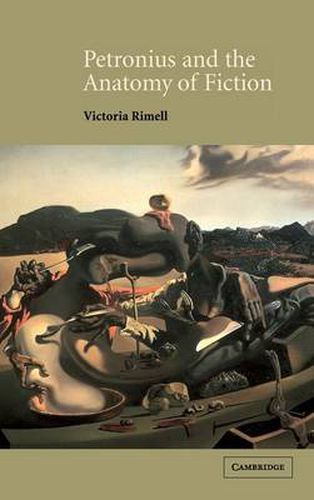Readings Newsletter
Become a Readings Member to make your shopping experience even easier.
Sign in or sign up for free!
You’re not far away from qualifying for FREE standard shipping within Australia
You’ve qualified for FREE standard shipping within Australia
The cart is loading…






Petronius’ Satyricon, long regarded as the first ‘novel’ of the Western tradition, has always sparked controversy. It has been puzzled over as a strikingly modernist riddle, elevated as a work of exemplary comic realism, condemned as obscene and repackaged as a morality tale. This innovative reading of the surviving portions of the work shows how the Satyricon fuses the anarchic and the classic, the comic and the disturbing, and presents readers with a labyrinth of narratorial viewpoints. Dr Rimell argues that the surviving fragments are connected by an imagery of disintegration, focused on the pervasive Neronian metaphor of the literary text as a human or animal body. Throughout, she discusses the limits of dominant twentieth-century views of the Satyricon as bawdy pantomime, and challenges prevailing restrictions of Petronian corporeality to material or non-metaphorical realms. This ‘novel’ emerges as both very Roman and very satirical in its ‘intestinal’ view of reality.
$9.00 standard shipping within Australia
FREE standard shipping within Australia for orders over $100.00
Express & International shipping calculated at checkout
Stock availability can be subject to change without notice. We recommend calling the shop or contacting our online team to check availability of low stock items. Please see our Shopping Online page for more details.
Petronius’ Satyricon, long regarded as the first ‘novel’ of the Western tradition, has always sparked controversy. It has been puzzled over as a strikingly modernist riddle, elevated as a work of exemplary comic realism, condemned as obscene and repackaged as a morality tale. This innovative reading of the surviving portions of the work shows how the Satyricon fuses the anarchic and the classic, the comic and the disturbing, and presents readers with a labyrinth of narratorial viewpoints. Dr Rimell argues that the surviving fragments are connected by an imagery of disintegration, focused on the pervasive Neronian metaphor of the literary text as a human or animal body. Throughout, she discusses the limits of dominant twentieth-century views of the Satyricon as bawdy pantomime, and challenges prevailing restrictions of Petronian corporeality to material or non-metaphorical realms. This ‘novel’ emerges as both very Roman and very satirical in its ‘intestinal’ view of reality.